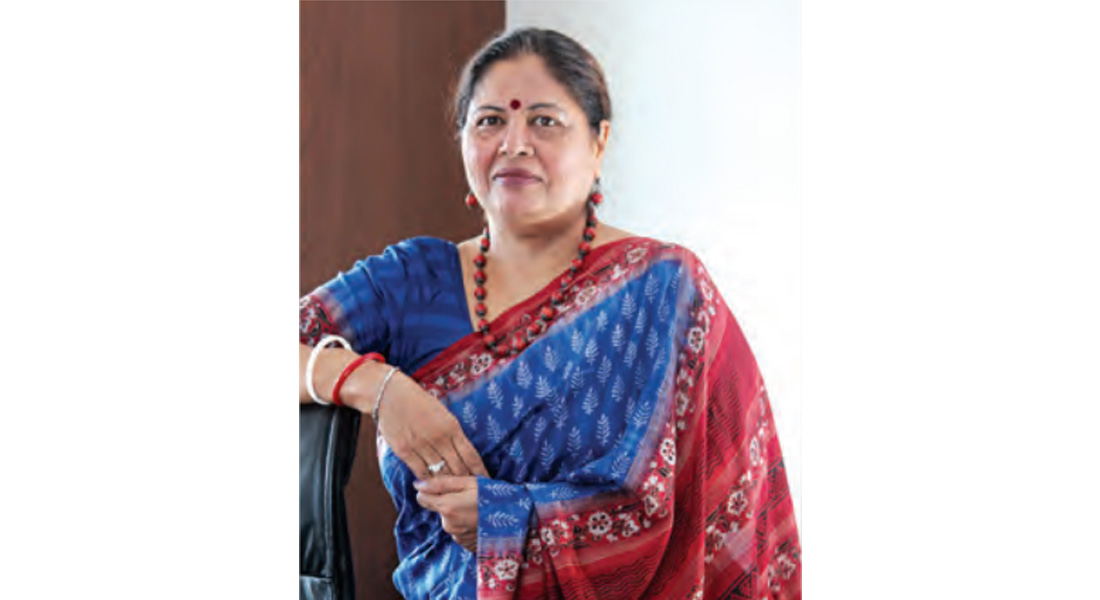In an exclusive interview with Solitaire International, NIRUPA BHATT, managing director, GIA India and Middle East, reminisces about the decade-long journey of the Institute that has worked closely with the industry to help grow business.
It’s been a decade-long journey for GIA in India under your stewardship. Tell us about some of the lab’s biggest achievements or milestones.
It has been an exciting and eventful period. In 2008, we extended GIA’s independent gemstone evaluation services, which meet global quality standards, to India. This reinforced the Institute’s mission to ensure the public trust in gems and jewellery. I understand this also helped the Indian diamond industry to sell online, reach newer markets and grow their exports. Over the past decade the industry has grown significantly, even during difficult times such as the 2009 global economic downturn. This growth, in turn, helped GIA India grow to over 1,200 employees today.
In addition to impartial, independent laboratory services and globally recognised education programmes, GIA supports local communities and trade. GIA India has supported the Maharshi Karve Stree Shikshan Samstha (MKSSS), a school dedicated to the empowerment of women through education. We also offer Trade Education Seminars (TES) and training programmes for retail sales associates from various retail jewellery outlets on a complimentary basis to support the Institute’s mission.
What in your opinion will be the greatest challenges to overcome in the next 10 years?
Major challenges for the industry are the rapid advancement of technology, identification of undisclosed lab-grown and treated gemstones. GIA is making significant progress in developing and introducing innovative services and instruments to help address these concerns, particularly undisclosed synthetic or treated diamonds in the supply chain. These innovations are backed by GIA’s continued investment in gemmological research for the past 80 years.
The new Surat facility signals GIA’s enduring faith in the Indian industry’s growth story. Tell us more about it.
India is the world’s largest diamond cutting centre. The opening of the laboratory in Surat will offer local diamond manufacturers access to our grading services. In addition, the availability of the GIA Melee Analysis Service – which separates natural, untreated diamonds from simulants, synthetic and HPHT treated natural diamonds, and sorts the screened diamonds by colour range – will help diamantaires in and around Surat, where majority of melee is cut and polished.
GIA has always been at the forefront of providing high-tech solutions for the industry. Is it difficult (from a technological and/or monetary perspective) to constantly innovate to meet new challenges?
A wide range of gem material – both natural and synthetic – can be found in the marketplace today. The processes to produce synthetic diamonds and other gemstones have become increasingly sophisticated, and details of the growth or treatment process are not always revealed. This creates a situation that compounds the difficulty of gem identification. GIA research efforts include the characterisation of natural gem materials to understand gem formation, trace element chemistry, causes of colour and geographic origin when possible. Key focus areas include treatment detection and the separation of natural from synthetic gem material.
At the heart of this focused effort on research is GIA’s mission to ensure public trust in gems and jewellery. As a missiondriven institute, GIA continually reinvests into its research efforts. A global team of more than 50 researchers and other GIA staff contribute to GIA’s research efforts. Their objective is to study advancements in the industry, treatments and synthetic gems.
How receptive has the Indian trade been to the high-speed melee-testing service?
India is the largest producer of melee diamonds, with the major concentration being in and around Surat. Increasingly, diamantaires are seeking a third-party identification service to ensure they meet the globally-accepted quality standards.
What is GIA’s stance on plans to introduce blockchain technology into the diamond supply chain?
There is a lot of discussion and perhaps confusion in the gem and jewellery industry about blockchain. GIA is examining how this new technology can be usefully applied in the gem and jewellery industry to enhance trust and protect consumers.

